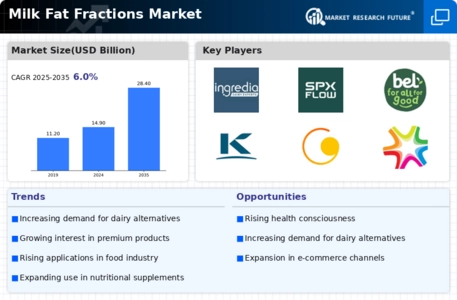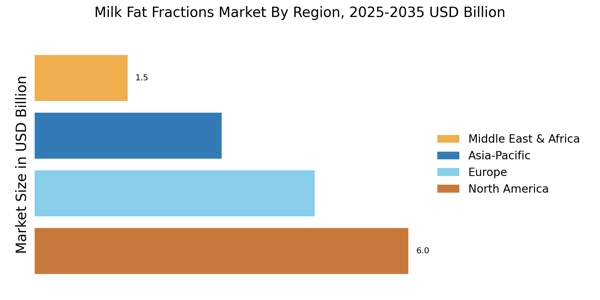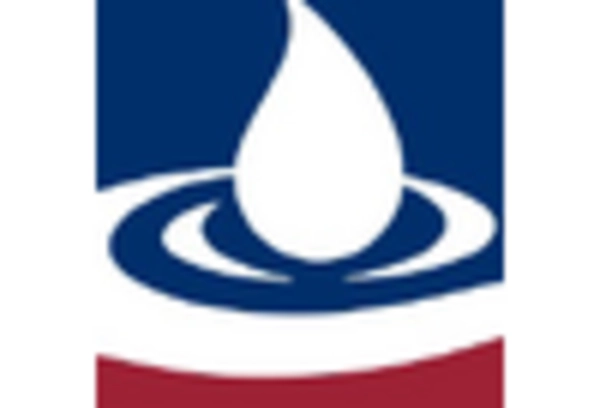Innovations in Food Technology
Technological advancements in food processing and formulation are significantly influencing the Milk Fat Fractions Market. Innovations such as microencapsulation and advanced emulsification techniques allow for better integration of milk fat fractions into various food products. These technologies enhance the sensory attributes and shelf life of dairy items, making them more appealing to consumers. Furthermore, the introduction of new processing methods has led to the development of specialized milk fat fractions that cater to specific dietary needs, such as lactose-free or low-fat options. This trend is expected to drive market growth as food manufacturers increasingly adopt these innovations to meet consumer demands.
Rising Demand for Dairy Products
The increasing The Milk Fat Fractions Industry. As consumers become more health-conscious, the preference for dairy items that contain milk fat fractions is on the rise. This trend is particularly evident in regions where dairy consumption is traditionally high. According to recent data, the dairy sector is projected to grow at a compound annual growth rate of approximately 3.5% over the next few years. This growth is likely to bolster the Milk Fat Fractions Market, as manufacturers seek to enhance the nutritional profile of their products by incorporating milk fat fractions, which are known for their health benefits.
Growing Interest in Functional Foods
The rising interest in functional foods is a notable driver for the Milk Fat Fractions Market. Consumers are increasingly seeking products that offer health benefits beyond basic nutrition. Milk fat fractions, known for their potential health advantages, such as improved heart health and enhanced cognitive function, are becoming integral to functional food formulations. Market data indicates that the functional food sector is anticipated to expand at a rate of around 4% annually, which could positively impact the demand for milk fat fractions. As manufacturers respond to this trend by incorporating these fractions into their products, the Milk Fat Fractions Market is likely to experience substantial growth.
Regulatory Support for Dairy Products
Regulatory frameworks that support the dairy industry are contributing to the growth of the Milk Fat Fractions Market. Governments in various regions are implementing policies that promote dairy consumption due to its nutritional benefits. These regulations often include subsidies for dairy farmers and initiatives aimed at increasing dairy product availability in schools and public institutions. Such support not only encourages production but also enhances the marketability of milk fat fractions as a key ingredient in various food products. As these policies continue to evolve, they are expected to create a favorable environment for the Milk Fat Fractions Market.
Increased Awareness of Nutritional Benefits
The heightened awareness of the nutritional benefits associated with milk fat fractions is driving growth in the Milk Fat Fractions Market. Consumers are becoming more informed about the role of dietary fats in overall health, leading to a shift in perception regarding milk fat. Research indicates that milk fat fractions can contribute to improved metabolic health and may play a role in weight management. This growing awareness is prompting food manufacturers to highlight the inclusion of milk fat fractions in their products, thereby enhancing their appeal. As consumer education continues to advance, the Milk Fat Fractions Market is likely to see increased demand.


















Leave a Comment